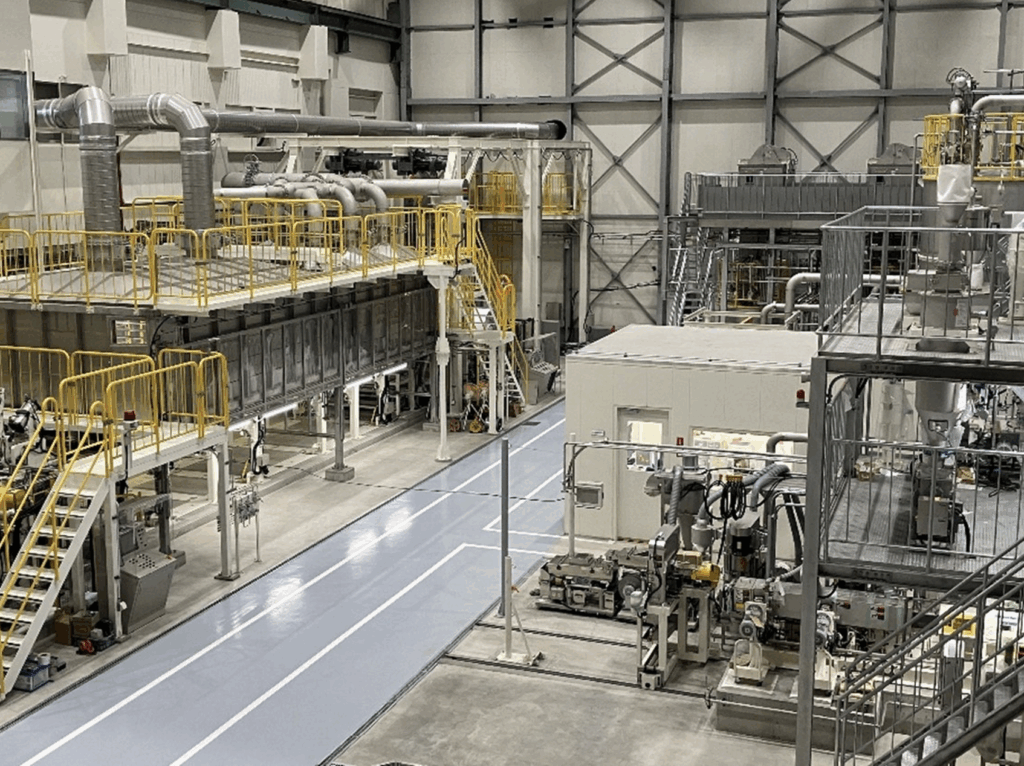https://www.nedo.go.jp/news/press/AA5_101870.html
Daio Paper Corporation has developed a manufacturing process for CNF composite resin manufacturing with an annual production capacity of 2,000 tons. The operation of this commercial plant will enable a stable supply of CNF for applications such as automotive components and home appliances, leveraging its light and strong properties.
Daio Paper manufactures everything from raw materials to CNF composite resin pellets, and has improved its technology for increasing the cellulose concentration in composite resins, raising the cellulose concentration in CNF composite resins from 55% to 67%. This has improved productivity, significantly reduced manufacturing costs, and led to mass-production technology.
Although CNFs are derived from plants, they possess a wide range of functions not found in paper pulp.
The CNF composite resin manufacturing process now in operation is characterized by its CNF pretreatment process and composite resin productivity. By utilizing papermaking and coating technologies, a technology was established for carbamate cellulose using urea to improve compatibility with resin. Furthermore, to improve composite resin productivity, Daio Paper and Shibaura Machine Co., Ltd. jointly developed a technology to uniformly and efficiently composite fine CNFs, which retain moisture easily. Based on this basic process established at the pilot plant, the commercial plant adopts a manufacturing process that is more efficient in terms of productivity and energy consumption. Furthermore, the pilot plant’s quality issue of CNF dispersibility was significantly improved, allowing production to begin with a quality that meets the requirements of a wide range of applications.
Daio Paper’s “ELLEX-R67” is a high-concentration pellet containing 67% partially CNF-converted cellulose (33% is a blend of polypropylene and a resin that improves compatibility) for quality and cost reasons. This allows for high flexibility in resin material design, making it easy for user companies to compound and mold. The improved rigidity of the CNF composite allows for thinner material, contributing to weight reduction and reduced plastic use. Furthermore, the fiber’s resistance to breakage minimizes deterioration of physical properties, making this material advantageous from a material recycling perspective.

